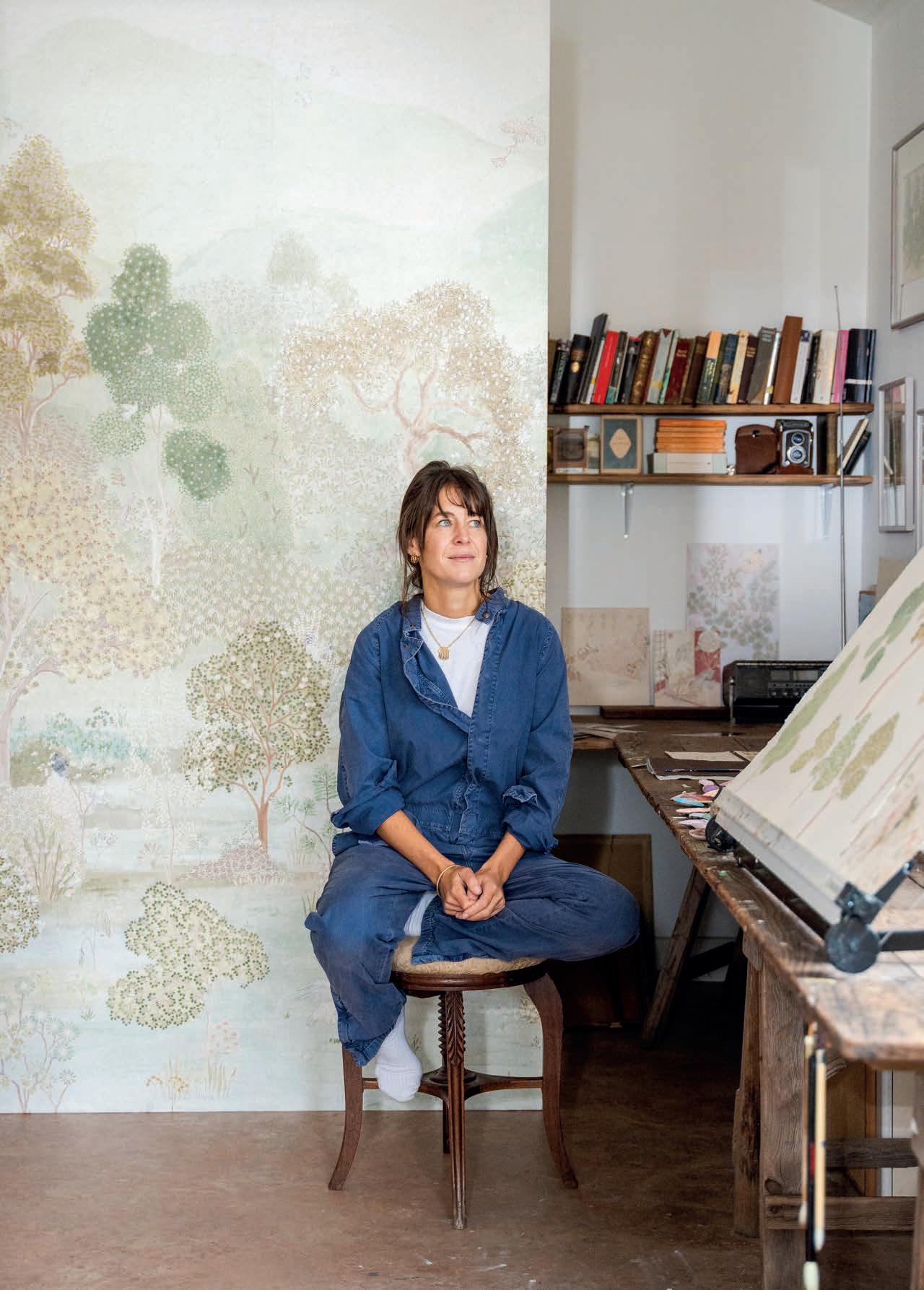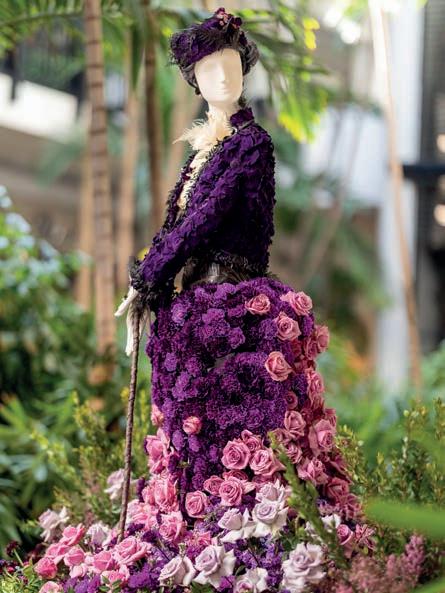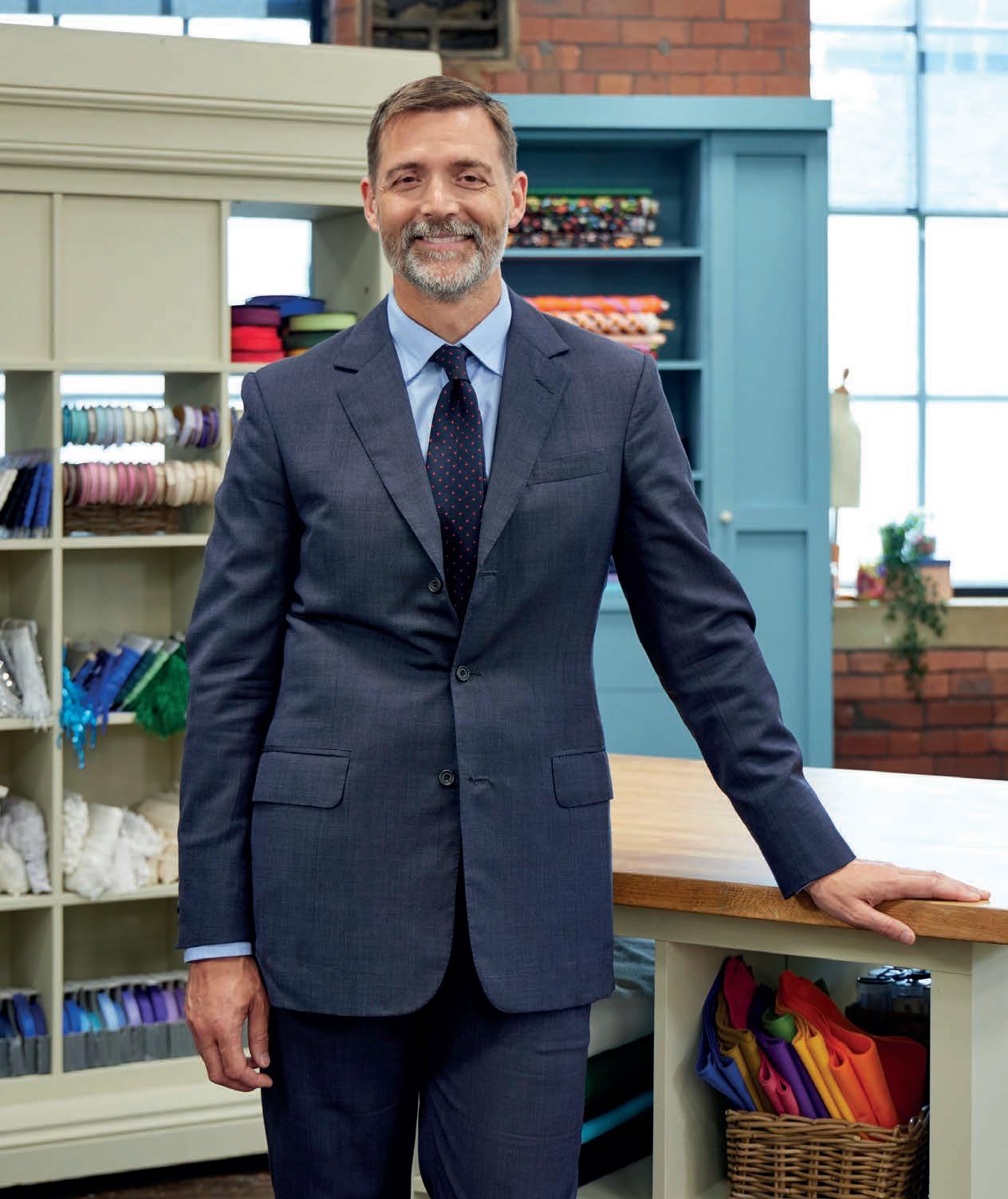Luxury lifestyle, prime property

Boomerang homes

Luxury lifestyle, prime property

Boomerang homes
From photography to paint and florals, catch all of the latest exhibition openings
The Royal Photographic Society (RPS) is showcasing a range of contemporary snapshots in the 166th edition of its International Photography Exhibition (IPE). The world’s longest-running annual photographic showcase invites guests to learn about emerging international artists, as well as the world they live in. The presentation explores culturally significant themes through the lensed storytelling medium, highlighting global communities, families and traditions. Ends 20 September. saatchigallery.com


The Art Car Boot Fair returns with a new theme: Art, Comedy & the Comic. Where high art meets humour, international artists (including comedy legend Vic Reeves) will be selling pieces from their cars. Don't miss a day of creativity and giggles in King's Cross. 20 September. artcarbootfair.com
Michelin-star London restaurant LUCA is exhibiting the magnetic works of Italian photographer Michele Iacobini, who specialises in travel and fashion subjects. The showcase, titled Those Who Stay and Those Who Leave, vividly captures summer in Sicily, where Ferragosto celebrations mark the height of summer. The prints are available to buy framed or unframed at LUCA on St John Street and online. shop.luca.restaurant

Blossoming to celebrate Downton Abbey: The Grand Finale (in cinemas from 12 September), a fl oral show inspired by the period drama and its costumes – Fleur de Villes, which translates to 'fl owers of the cities' – comes to Kew Gardens. Elsewhere on site, you can enjoy talks from local fl oral experts and indulge in afternoon tea in the Orangery. Opens 22 September. kew.org

Read on for the hottest dining events, days out and show openings this month
Making wavс
The Lady from The Sea will see the UK stage debut of Oscar winner Alicia Vikander. Co-starring Andrew Lincoln, the play is a contemporary adaptation of Henrik Ibsen's tale of desire, loss and rebirth. Opens 10 September bridgetheatre.co.uk



Marking 50 years of the InterContinental on Park Lane, award-winning chef Theo Randall (above) will be joined by other UK culinary powerhouses: Jamie Oliver, Angela Hartnett, Francesco Mazzei and Jacob Kenedy for a very special evening to raise money for The Felix Project, which is committed to fighting hunger and food waste in the capital. 4 September, buy tickets online parklane.intercontinental.com
Guests are invited to A Day on The Lane in the charming neighbourhood of Marylebone. It’s a chance to take in the atmosphere of the lively location, enjoy alfresco dining at restaurants such as Lina Stores, try crafting workshops, join free fitness classes at Third Space, and more. The event supports the Young Westminster Foundation, which helps create brighter futures for young people in the area by working with the community. 13 September marylebonevillage.com

Based in HMP Brixton, The Clink restaurant's summer menu offers gourmet dishes, with seasonal ingredients to match the vibrancy of summer. Run by The Clink Charity, prisoners are trained in professional kitchens and hospitality roles, while serving their sentences. Book now at theclinkcharity.org
STRONG SUIT
PATRICK GRANT SHARES HIS TAILORING EXPERTISE ON THE GREAT BRITISH SEWING BEE, ALONGSIDE DESIGNER ESME YOUNG

The Great British Sewing Bee judge talks to Tallulah Rushaya about Community Clothing, craftsmanship and his Savile Row years
I grew up in Edinburgh, and lived in an area in the south called Morningside. I went to school in Edinburgh until I turned 14, then to boarding school in Durham.
I went to university to study engineering, but had never considered it as a career, just a happy accident. I changed tack when I was 32, and moved into fashion and clothing. However, I used to read at school. I used to read all the fashion magazines. As a child I admired the works of Vivienne Westwood (I was lucky enough to meet her a few times) and Jean Paul Gaultier. I loved his clothes in the mid 1980s.
My first London home was temporary. I’ve lived in various areas in east London, from Mile End to Bromley-by-Bow. At one point, I lived above a pub called the Empress of India. The first proper home I had was in east London, on Fremont Street, near Victoria Park. It was also close to Broadway Market.
I used to go to Climpson & Sons coffee shop, which is still there. The atmosphere in the market was lovely on a Saturday. The little bookshop Donlon had beautiful art books and interesting artists’ events. The area has got even better over the last few years. Walking along the canal in Victoria Park was gorgeous as well. It was a joy to have that on my doorstep.
I live in North Yorkshire now, my little corner has good food. I do miss London, but my girlfriend lives there, so I still get to visit.
Because I worked in Mayfair for so long, there are so many places I like. Berry Bros. & Rudd, even though I don’t drink, is the coolest shop in the world. Having spent 20 years working on Savile Row, that corner I really liked.
Working in the fashion industry, I remember being told to just follow my instinct, which served me well. With Norton & Sons on Savile Row, I knew that it had worked in the past. It was a question of working hard and doing better than they’d done before. I had great confidence it would work when I bought it, and that I could nurse it back to health.
When I started Community Clothing, instinct was especially important. Many thought ‘this model isn’t going to work’. Nine years on, we’ve proven it can. Using a different model, we achieved what we wanted to achieve. We make clothes that people want to wear for a long time, by thinking about individual items, not seasonal.
We can spend about 18 months or more designing a garment. It’s all about making sure we know about every stage of production, ensuring nothing bad happens. It’s a very different design process, and one with enjoyment.
There was a time when people took pride in their work, and the process. This still happens on Savile Row today. If we want to be a society that enjoys itself, we should all be satisfied with our jobs. We used to have that, but greedy people have taken us from living with good quality to not.
Other brands used to have that slow process. For example Burberry sold half a dozen items, with the trenchcoat being a staple design, Barbour is another brand example. Hunter sold maybe three wellies. Good materials have become a luxury, when they shouldn’t be. Everyone should be able to afford a good wool jumper.
There are far too many fashion brands, there needs to be a reset. It’s interesting to see the rise of Vinted. It’s challenging people and brands. Fast-fashion brands are getting worse, but consumers are much more considerate.
In my home, almost everything is homemade or second hand. I work from a desk that’s 150 years old. I even installed 1970s light switches, as they’re better.
There’s now an interest in making among the younger generation, there’s definitely a turning point. It’s clear in the
“GOOD MATERIALS HAVE BECOME A LUXURY, WHEN THEY SHOULDN’T BE. EVERYONE SHOULD BE ABLE TO AFFORD A GOOD WOOL JUMPER”
engagement of makers’ videos. The next logical step is seeing it as a good career path. When you have great English shoemakers like Tricker’s and Crockett & Jones, designing shoes that can last years, people can look for quality.
We’re currently working on beautiful wool coats for this winter at Community Clothing, and will start production soon. Recently, I was in a Macclesfield printer for plastic-free swimwear. Reclaimed tents have also been explored for outwear designs.
We’re likely to look into homeware design – like towels and bed linens – soon. It’s hard to buy good cotton unless you’re a billionaire. People don’t look at the material: most towels are made using synthetic materials. We’re always looking to recruit good people. Until last year, we didn’t design shoes and used a small trainer factory in Bolton.
Our impact report is published every six months, one of the key measurements being: how many hours of work we’ve created. So far it’s 469,000 and only growing. While I enjoyed working on Savile Row, starting Community Clothing from scratch is a highlight. I’m enormously proud of creating genuine good for local society and the economy, and it motivates me to do more. L
The Great British Sewing Bee’s 11th series currently airs on BBC One every Tuesday. To shop Community Clothing, visit communityclothing.co.uk

FADED AND IMPERFECT. GO BACK IN TIME TO FURNISH YOUR HOME WITH PIECES THAT TELL A STORY, SAY S TALLULAH RUSHAYA
Ahome filled with curious finds is an essential part of London living. Whether sourced from a dealer, at auction, or inherited, the depth brought is incomparable. In a city rich with period architecture, and where history is treasured, these sought-after pieces can only enhance a room’s allure. The storytelling vehicle of vintage and preloved is what truly makes a house a home. If you know where to look, you can transform your space into a treasure trove of history.
Whether it’s original flooring, ceiling beams or furniture, wood is a way to bring the outside in. In Anouska Tamony’s (anouskatamony.com) Kew project, the Queen Anne style dresser from the 1930s was a highlight. A versatile design that suit s modern and period homes alike, there’s a timeless elegance a dresser brings. Sourcing antiques made from solid wood not only indicates high quality craftsmanship, but adds a less-predictable originality, Anouska points out. “Warmer woods were preferred in the past (rosewood, mahogany, walnut etc.), whereas current tastes lean towards paler woods and ashier tones,” she says. The vastly different wood types are at times what steer individuals to stick to one wood scheme, for fear of overwhelming a space. Anouska’s Kew master bedroom harmoniously mixes four different wood tones.
Sam and Katie Ridges, siblings and co-founders of The Spotlight Market (thespotlightmarket.com) find kitchens offer endless ways to incorporate preloved, in a highly personalised style. Their London-based a ntique fair brings attention to furniture and decorative antique dealers who don’t have permanent premises, with a
Opening: Interior design firm Stelly Selway brought pale woods, muted contemporary-cool tones and old-school Californian flair to this Chiswick home, reflecting the owner’s eclectic design taste
curated roster throughout the year. Ensuring every era is accounted for, it’s an ideal destination for design-conscious interiors shoppers. From crockery to building a space with reclaimed salvage, the siblings particularly love seeing reclaimed fixtures and fittings. Citing Retrouvius (retrouvius.com) as an excellent source of salvaged items, they note that durable iroko wood is a great kitchen choice. “Most reclaimed iroko is salvaged from school science labs undergoing renovations, where hardwoods are routinely replaced with plastic alternatives,” they say. As wooden items tend to be quite sizeable, and having w itnessed several instances of clients being unable to fit an item through a door or around a hallway corner, they also recommend measuring twice to avoid heartbreak.
Undoubtedly, it’s the lived-in state of preloved is where the magic lies. Every scratch tells a story, every dent is a display of a life. “Patina, those signs of age like worn leather, faded paint, or a nicked tabletop, can’t be replicated,” highlights Tom Rutt, founder of TR Studio architecture and interiors practice (trstudio.co.uk). Specialising in bringing warmth to homes, he cautions against over-restoring. The subsequent reduction of character can gravely devalue an item.
Preloved pieces can offer an element of surprise, bringing warmth to even the most modern homes.
Challenged in creating a home that buyers weren’t expecting, Nomad Developments rose to the brief of in fusing a super-prime Central London penthouse with a ‘curated aesthetic, but set in the countryside’ the result was a home that leaned into soulful

THE TALENTED MAKERS WHO ARE PUTTING QUALITY AND CRAFTSMANSHIP ABOVE ALL IN THE HEART OF THE CAPITAL

The artisan culture in London is steeped in history, from the jewellery makers of Hatton Garden to the ever-present influence of William Morris’ textiles. Every corner of the city enjoys creativity that’s heralded around the world. Here, we meet some of the makers behind the crafts, furniture and homewares keeping the capital’s traditions alive.
bekibright.com
The tales and visuals of English folklore are sources of inspiration for London-based textile and screen-print artist Beki Bright. Having grown up between rural Suffolk, and Somerset, her work is filled with landscape motifs. “My grandad used to breed Suffolk punch horses; his farmhouse walls were adorned with memorabilia from past country shows, corn dolls and horse shoes,” she recalls. Looking to 20th century artists such as Vanessa Bell, Enid Marx, Peggy Angus and Eric Ravilious whose work brims with energy, Beki’s output evokes a stylishly playful liveliness. Making cushions, lampshades, wallpaper and fabric by the metre, the screens are printed and designed in London via largely unchanged traditional methods.
billamberg.com
A master of leather innovation for more than 30 years, Bill Amberg Studio is an industry leader: from interior projects to furniture and bags, its artisans make it all. Having been raised in Northampton, Britain’s shoemaking centre, leather was something of a predetermined calling for the brand’s eponymous founder. As a trustee at Cockpit Arts – a social enterprise helping unemployed makers or those at the infancy of their business – and through r unning workshops in Deptford and Bloomsbury, Bill has seen first-hand the enthusiasm for making. “Studio spaces and workshops in the city are oversubscribed – there’s a huge appetite among young people to learn hands-on skills and find opportunities to make in London,” he says. The challenge

for makers he notes is space, which is in demand and expensive. “Whenever we advertise a role in the workshop, we’re flooded with applications.” The eagerness can only be a positive, with Bill finding it “incredibly encouraging” to see the culture of making in London thriving.
steinway.co.uk
Below street level on Marylebone Place, musical magic is taking place. This is the Steinway & Sons workshop, which lies beneath the home of the world’s finest pianos. Started by a German family in New York, Steinway & Sons arrived in London in 1875, ”before the telephone”, notes managing director Craig Terry. While new instruments are made for the European and Asian market in the Frankfurt factory, in the London workshop, cherished models are restored to their former glory.
Piano technician Rob Johnson has honed his craft over 10 years. He trained at the Royal Welsh College of Music in Cardiff before deciding his career lay in restoration rather than recitals. The 1928 model he’s working on needs a new soundboard, pinblock, keyboard and action – it belonged to the owner’s mother and has emotional value. Nearby, a 1901 Rosewood requires an exquisite handcut veneer. Notes drift down from upstairs, as professional musicians practise ahead of concerts. Portraits of Steinway artists line the walls, and support

PUT A FACE TO THE MAKER
Opening page: Leather extraordinaire Bill Amberg, seen here in his studio, is passionate about inspiring the next wave of craftsmanship
Clockwise from top left: A piano gets a retune in the Steinway & Sons workshop; Beki Bright unveils some of her signature vibrant screen-print designs; A Steinway & Sons technician restores a piano’s soundboard




LOOKING FOR SOMEWHERE TO GO WITH HEART AND SOUL? TRY THESE DESTINATIONS WHERE EVERY DETAIL IS ACCOUNTED FOR…
